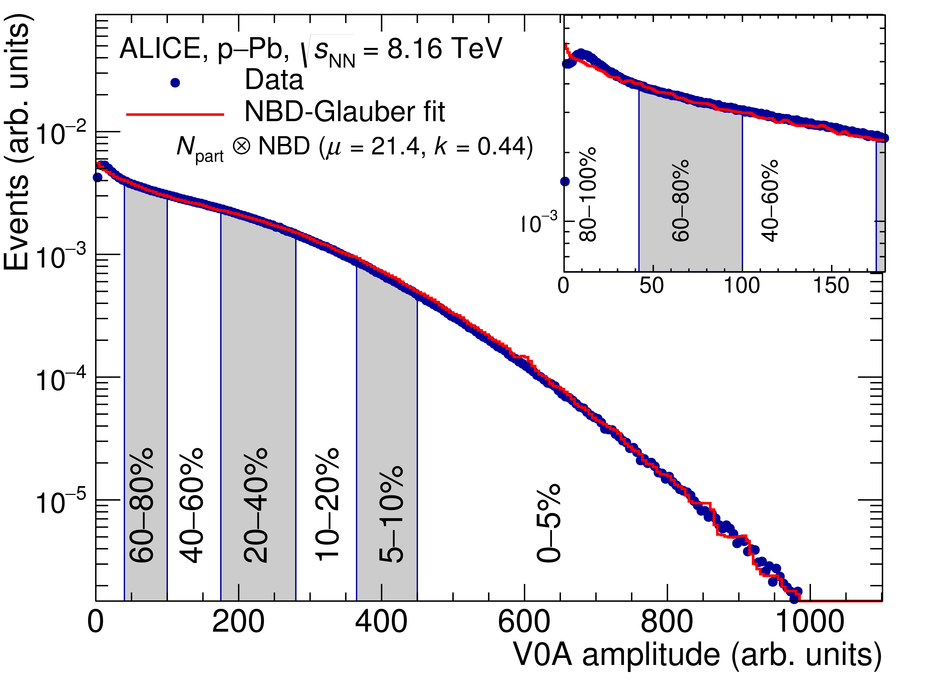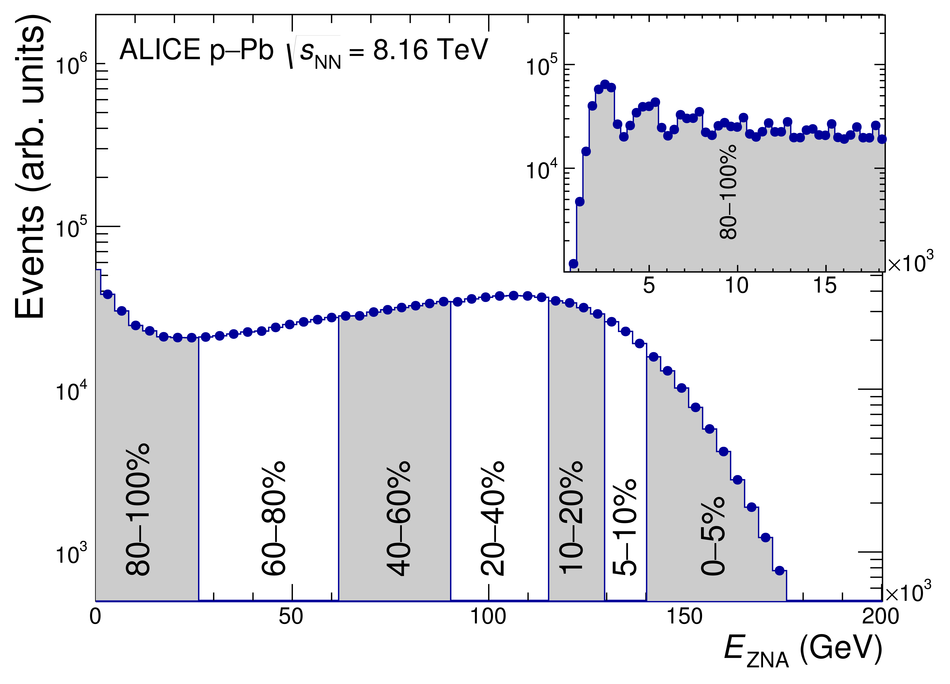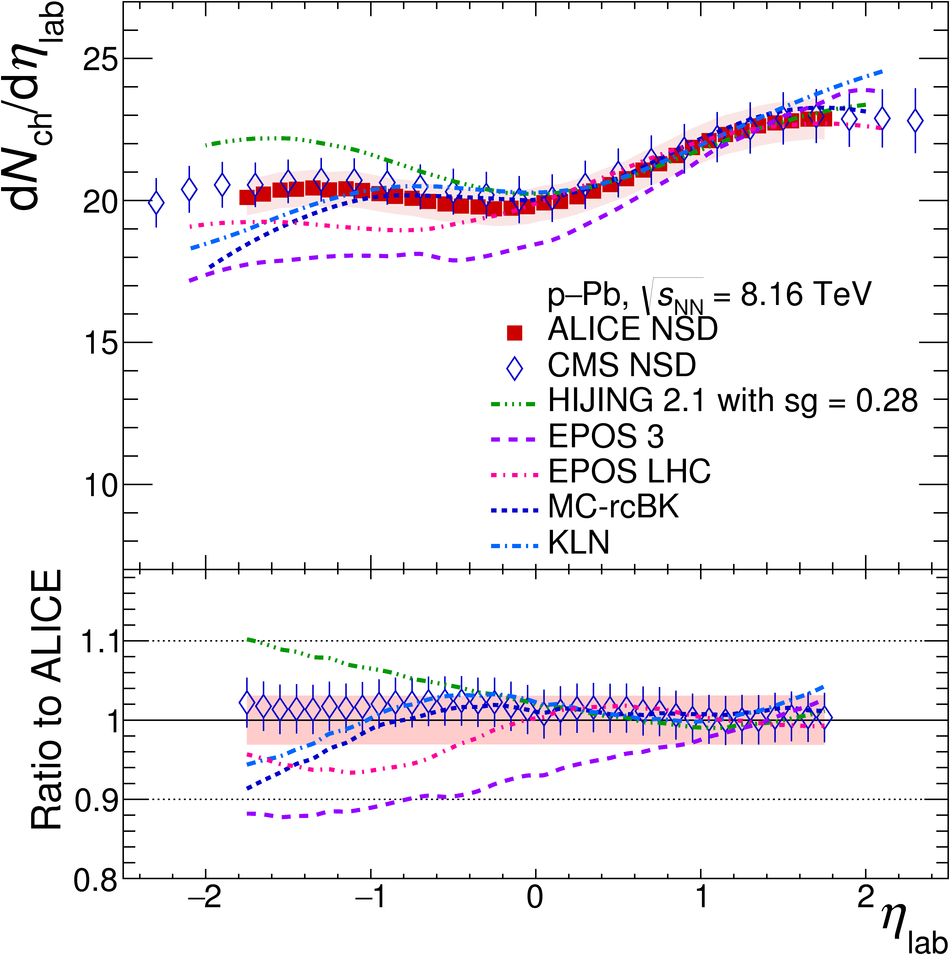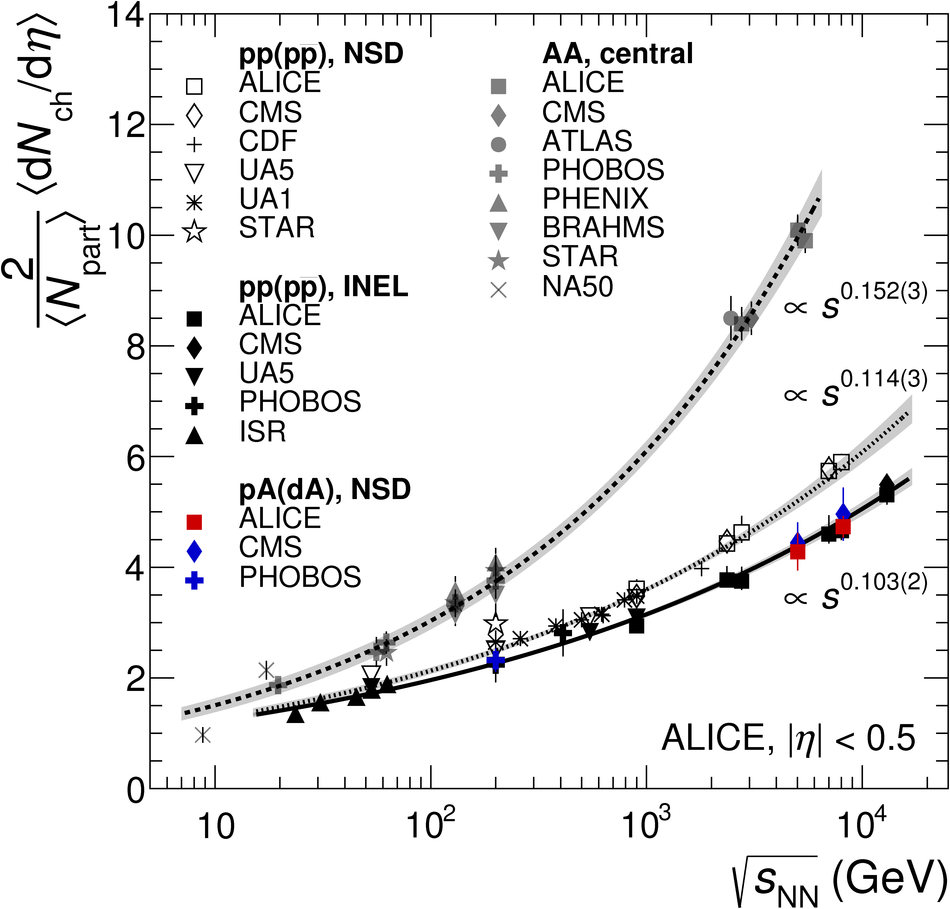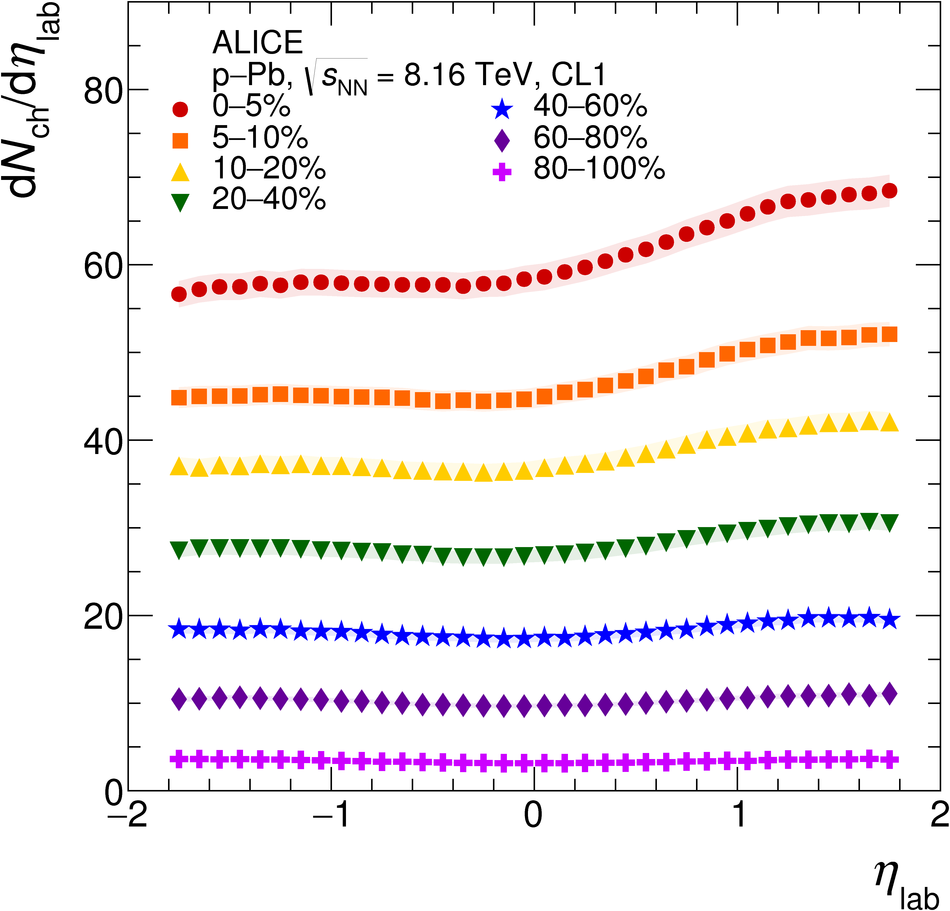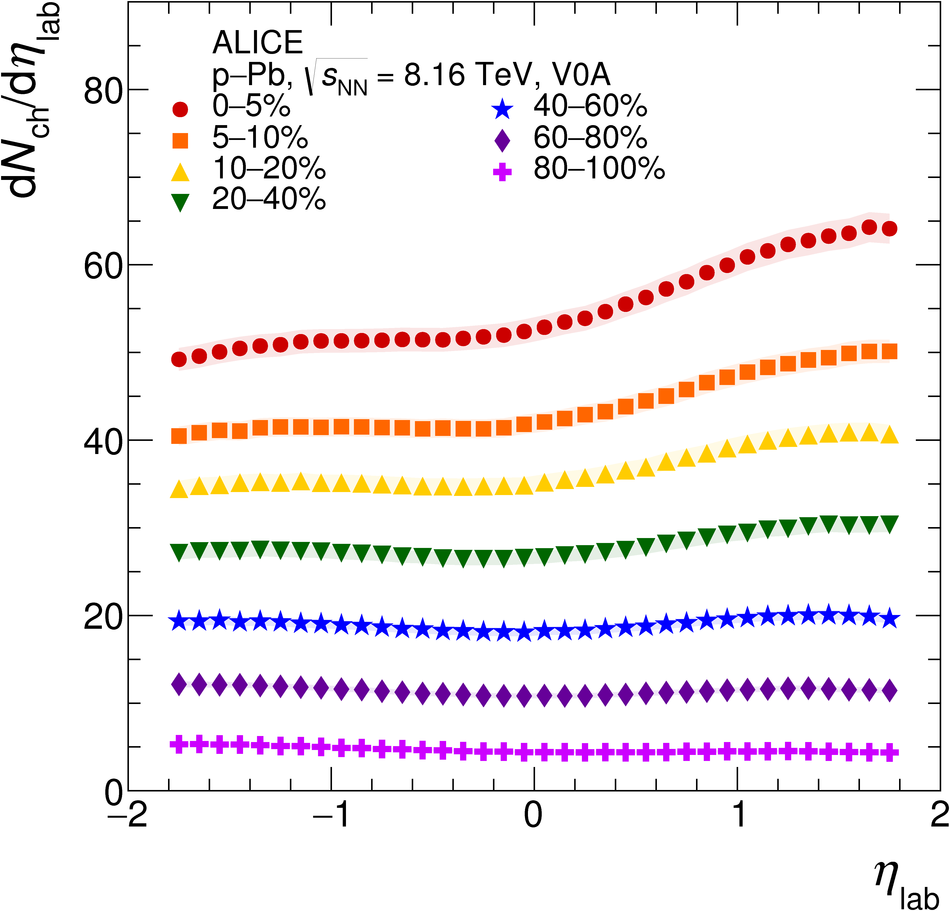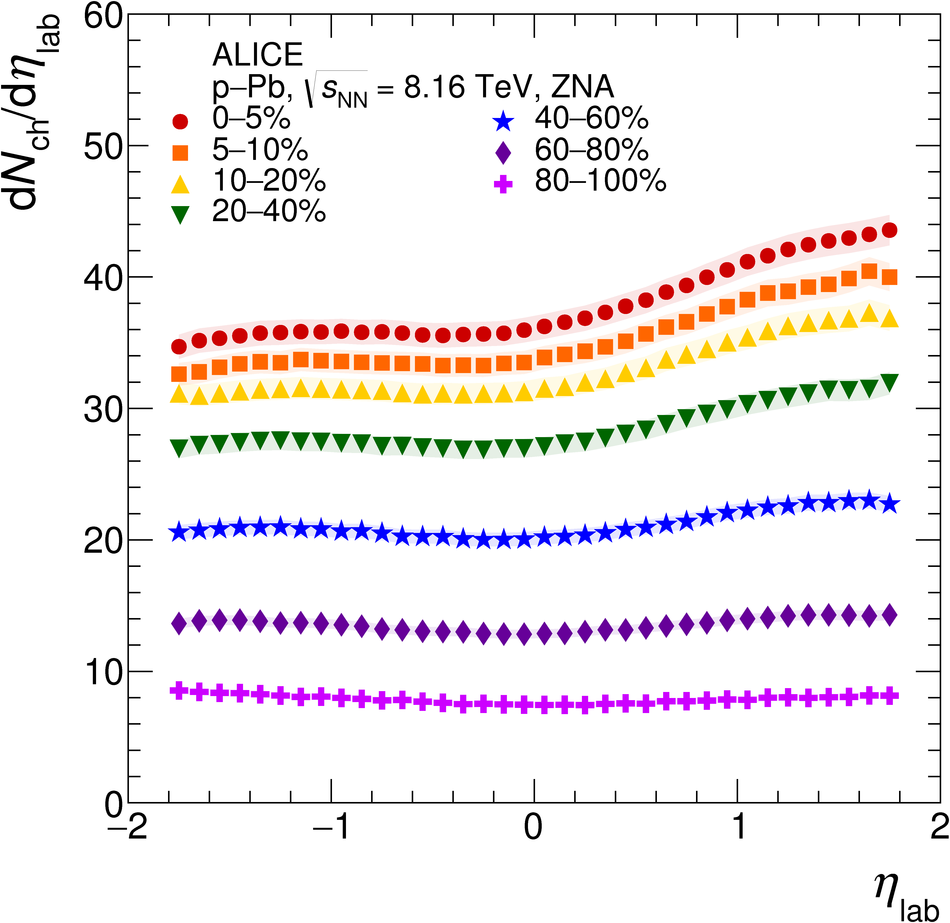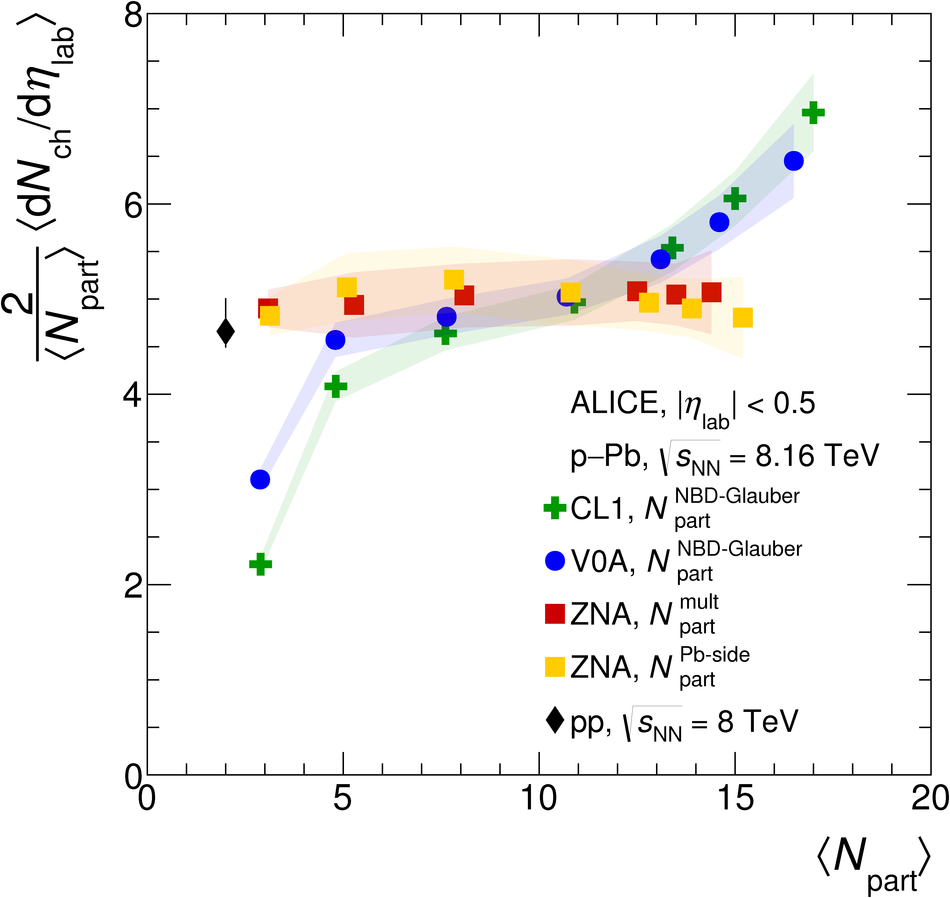The pseudorapidity density of charged particles, $\rm{d}\it{N}_\rm{ch}/\rm{d}\it{\eta}$, in p-Pb collisions has been measured at a centre-of-mass energy per nucleon-nucleon pair of $\sqrt{s_{\rm{NN}}}$ = 8.16 TeV at mid-pseudorapidity for non-single-diffractive events. The results cover 3.6 units of pseudorapidity, $|\eta|<~1.8$. The $\rm{d}\it{N}_\rm{ch}/\rm{d}\it{\eta}$ value is $19.1\pm0.7$ at $|\eta|<~0.5$. This quantity divided by $\langle N_\rm{part} \rangle/2$, is $4.73\pm0.20$, which is 9.5% higher than the corresponding value for p-Pb collisions at $\sqrt{s_{\rm{NN}}}$ = 5.02 TeV. Measurements are compared with models based on different mechanisms for particle production. All models agree within uncertainties with data in the Pb-going side, while HIJING overestimates, showing a symmetric behaviour, and EPOS underestimates the p-going side of the $\rm{d}\it{N}_\rm{ch}/\rm{d}\it{\eta}$ distribution. Saturation-based models reproduce the distributions well for $\eta>-1.3$. The $\rm{d}\it{N}_\rm{ch}/\rm{d}\it{\eta}$ is also measured for different centrality estimators, based both on the charged-particle multiplicity and on the energy deposited in the Zero-Degree Calorimeters. A study of the implications of the large multiplicity fluctuations due to the small number of participants for systems like p-Pb in the centrality calculation for multiplicity-based estimators is discussed, demonstrating the advantages of determining the centrality with energy deposited near beam rapidity.
Eur. Phys. J. C (2019) 79: 307
HEP Data
e-Print: arXiv:1812.01312 | PDF | inSPIRE
CERN-EP-2018-315

